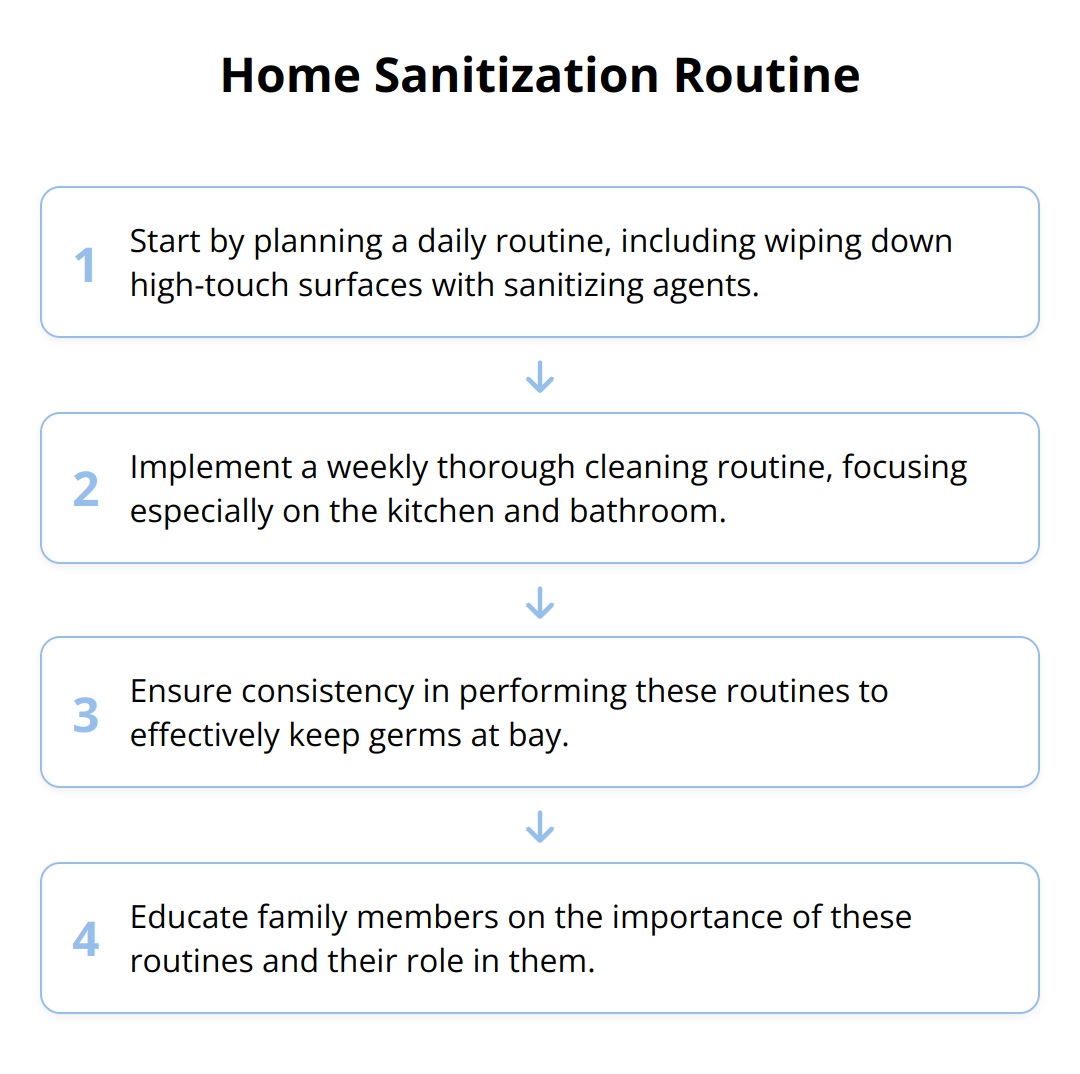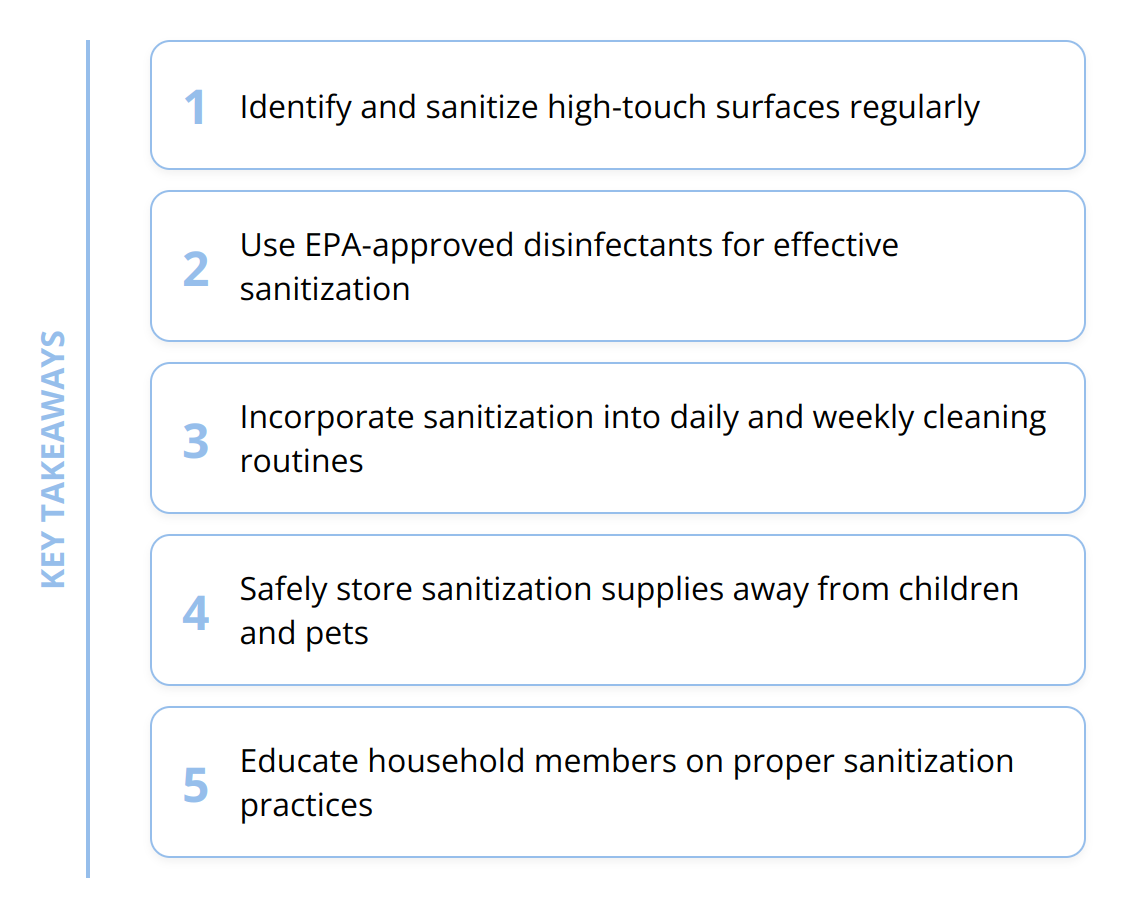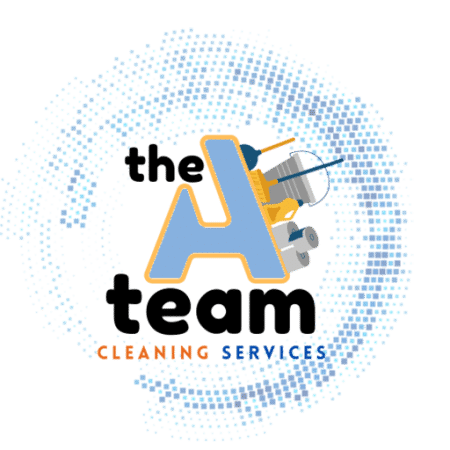Sanitizing your home isn’t just about keeping it visually clean; it’s vital for your health. At The A Team Cleaning Services, we understand how crucial it is to maintain a sanitized living space. Today, we’re sharing some of our top strategies to help you achieve a cleaner, healthier home.
These practices are not only straightforward but also effective in preventing the spread of illnesses.
Why Sanitize Your Home?
Sanitization is not just a buzzword; it’s a crucial step in maintaining a healthy living environment. It bridges the gap between simple cleaning and disinfecting, targeting and reducing bacteria to safe levels. This is critical in preventing the spread of illness, especially in areas where food is prepared or for surfaces frequently touched by young children.
Cleaning vs Sanitizing vs Disinfecting: Although often used interchangeably, these terms have distinct meanings. Cleaning removes visible dirt and impurities from surfaces. Sanitizing goes a step further by reducing the number of bacteria to safe levels, as determined by public health standards. Disinfecting, on the other hand, eliminates most pathogens and viruses. Choosing the right process depends on the situation and the level of germ removal required.

Practical Steps to Home Sanitization
- Identify High-Touch Surfaces: Focus on doorknobs, light switches, and other areas frequently touched. These spots are breeding grounds for bacteria.
- Choose the Right Products: For sanitizing, look for products that meet EPA standards. Ensure that the product is suitable for the surface you intend to clean.
- Follow Product Instructions: The effectiveness of sanitization depends on using products correctly. Pay attention to the required contact time for the sanitizer to be effective.
- Regular Schedule: Incorporate sanitation into your regular cleaning schedule to maintain a consistent level of hygiene.

Incorporating these steps into your cleaning routine can significantly impact your home’s health environment. For further guidance on creating a healthier living space, exploring our collection of articles, such as healthy home tips and disinfection essentials, can offer valuable insights.
Understanding and implementing these practices ensures that you’re not just tidying your space but actively contributing to the well-being of your home’s occupants.
Effective Sanitization Strategies
Creating a sanitized home environment goes beyond regular cleaning routines. It’s about targeting and neutralizing germs effectively to ensure a healthy living space. This chapter provides actionable tips and deep dives into the best practices for home sanitization.
Pinpointing High-Risk Areas
The first step toward effective sanitization is identifying areas that are most prone to harboring bacteria and viruses. These generally include high-touch surfaces such as door handles, light switches, countertops, remotes, and faucet handles. It’s essential to sanitize these areas regularly to minimize the risk of illness. Additionally, don’t overlook personal items like cell phones and keys which are frequently used and can carry a high load of pathogens.
Selecting Proper Sanitization Products
The choice of sanitization products is pivotal. Opt for EPA-approved disinfectants that are proven to be effective against a broad spectrum of bacteria and viruses. Always read labels carefully to ensure the product is suitable for the specific surface you’re treating and follow the manufacturer’s instructions for use, including the prescribed contact time to ensure maximum effectiveness. For a list of approved products, the EPA’s website offers a comprehensive guide.
Embracing DIY Solutions
While commercial products are effective, there are times when you might prefer a more natural approach or need an alternative due to supply shortages. A simple yet effective DIY sanitizing solution can be made using equal parts of water and white vinegar or a diluted bleach solution (4 teaspoons of bleach per quart of water). These solutions can be highly effective for sanitizing non-porous surfaces. However, it’s important to note that bleach should be used with caution, in well-ventilated areas, and never mixed with other cleaning agents.
Implementing a Routine
Effective home sanitization isn’t a one-time task; it requires routine effort. Incorporate sanitization into your daily and weekly cleaning schedules, paying special attention to those high-touch and high-risk areas. This not only maintains a healthier environment but also makes the process more manageable.

For more insights, our guide on [enhancing home wellness] (https://www.theateamcleaning.net/how-to-enhance-your-homes-wellness-through-cleaning/) includes additional tips on creating a clean, safe home.
Quick Tips for Enhanced Sanitization
- Always ventilate the area when using strong disinfectants.
- Use disposable gloves when handling chemicals and discard them after each use.
- Consider using microfiber cloths for cleaning surfaces as they are effective at trapping germs.
By employing these strategies, you’re well on your way to maintaining a sanitized and healthy home. Stay informed on the latest products and practices, and never compromise on the health and safety of your household.
Keeping Your Home Sanitized
Maintaining a sanitized living space is more than a one-time effort; it’s an ongoing commitment. With daily and weekly tasks, safe storage practices, and educating family members on the importance of sanitization, you can ensure your home remains a healthy environment.
Establishing Routines
Effective sanitization doesn’t happen by chance. It requires planning and implementation of routines that ensure all areas of your home are regularly sanitized. Daily routines should include wiping down high-touch surfaces such as door handles, light switches, and countertops with the right sanitizing agents. Weekly routines can involve a more thorough cleaning of your entire home, paying extra attention to the kitchen and bathroom where bacteria and viruses are more likely to breed. Remember, consistency is key to keeping germs at bay.

Safe Storage of Supplies
Storing your sanitization supplies correctly is as important as using them. Keep all chemicals out of reach of children and pets, preferably in a locked cabinet. It’s also essential to store them in their original containers with labels intact to avoid confusion and potential misuse. Proper ventilation is necessary to prevent fumes from building up, ensuring your storage area is well-aired.
Educating Your Household
Everyone in the household plays a crucial role in maintaining a sanitized environment. Therefore, educating family members about the importance of sanitization and how they can contribute is vital. Simple practices like washing hands regularly, using sanitizers, and adopting responsible behaviors, such as covering one’s mouth and nose when coughing or sneezing, can significantly reduce the spread of germs.

For additional practical tips on enhancing your home’s sanitation, exploring our guide on eco-friendly cleaning might provide you with sustainable options.
By implementing these strategies, you’re not just cleaning your home; you’re actively protecting the health and well-being of everyone who lives in it.
Final Thoughts
Sanitization is a key element in maintaining a healthy, comfortable living environment. Throughout this post, we’ve provided a thorough overview of the best practices for keeping your home sanitized, from identifying high-touch areas to choosing the right products and establishing a regular cleaning routine. By implementing these strategies, you can protect your household from germs and contribute to a cleaner, safer living space.

A sanitized home impacts your health by reducing the risk of illness and creating a more inviting atmosphere for everyone. The importance of living in a clean environment cannot be overstated, especially considering the potential for indoor pollutants to be significantly higher than outdoor levels.
We encourage you to adopt these sanitization practices for a healthier home. Remember, effective sanitization is more than a one-time effort; it requires consistency and commitment. By incorporating regular sanitization into your cleaning routine, you ensure a higher standard of cleanliness and health for your home.
For those looking for professional assistance, we at The A Team Cleaning Services are here to help. Our experienced cleaners use professional-grade products and equipment, ensuring your home is not only clean but also meets high standards of hygiene. With tailored cleaning plans, we can meet your specific needs and provide a hassle-free solution to maintaining a pristine living environment.
By choosing a professional cleaning service, you gain not just a spotlessly clean home but also peace of mind, knowing your space is being cared for by experts. Let us help you create a healthier, more inviting space for you and your loved ones.
In conclusion, adopting regular sanitization practices is essential for a healthier living environment. Remember, a clean home is a happy home.
